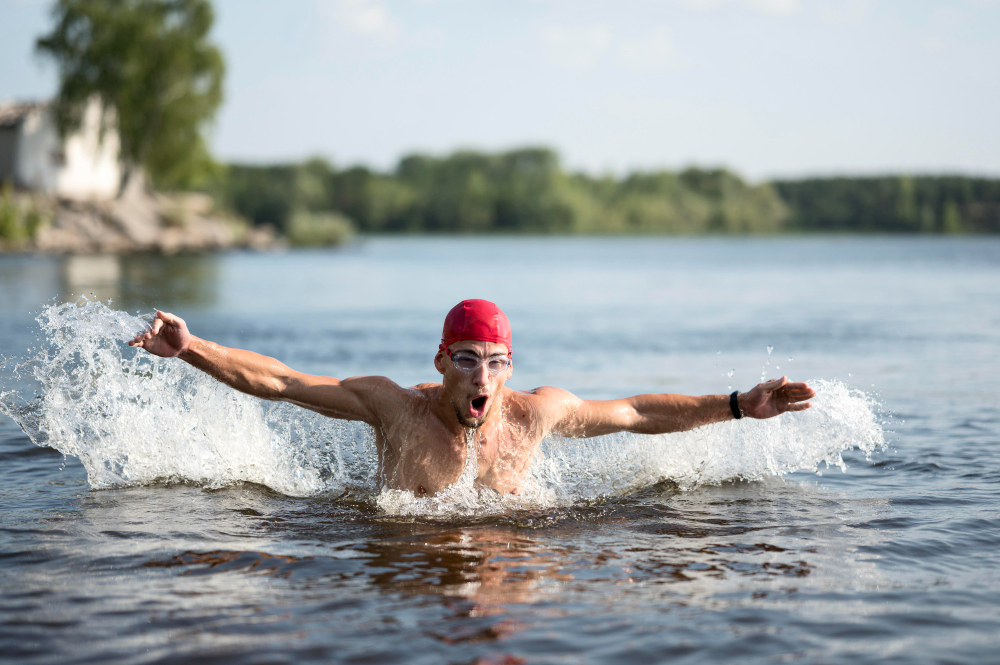
What is Swimmer’s Itch – Cercarial Dermatitis?
Swimmer’s itch, scientifically known as cercarial dermatitis, is a common skin condition that can affect individuals after swimming in freshwater bodies such as lakes, ponds, and rivers. Understanding the causes, risk factors, signs and symptoms, treatment options, potential complications, and prevention methods is essential for swimmers to stay safe and enjoy their aquatic adventures without the fear of this uncomfortable condition.
Causes Of Swimmer’s Itch:
Swimmer’s itch, also known as cercarial dermatitis, is caused by microscopic parasites called cercariae. These parasites typically infect waterfowl and certain snails. When humans swim in water contaminated with these parasites, the cercariae can penetrate the skin, causing an itchy rash. Here are the main causes:
- Parasite Life Cycle: Cercariae are released by infected snails into the water, where they seek out a suitable host, often waterfowl. Humans can inadvertently become hosts when they come into contact with contaminated water.
- Contaminated Water: Swimmer’s itch is more common in freshwater bodies like lakes, ponds, and rivers, where infected snails and waterfowl are present. Swimming in these waters increases the risk of exposure to cercariae.
- Seasonal Factors: Swimmer’s itch is more prevalent during the warmer months when people are more likely to swim in freshwater. Warmer water temperatures can also influence the activity of cercariae.
- Geographic Location: Certain regions, particularly those with abundant snail and waterfowl populations, are more prone to swimmer’s itch outbreaks.
It’s important to note that swimmer’s itch is usually a temporary and mild condition, but it can be uncomfortable. To reduce the risk, you can towel off and shower after swimming, avoid swimming in areas with known outbreaks, and wear swimwear to minimize skin exposure.
Risk Factors:
Several factors increase the risk of contracting cercarial dermatitis, including swimming in water bodies known for hosting infected snails, spending extended periods in the water, and being in areas with a high concentration of bird populations that are reservoirs for the parasite.
Signs and Symptoms:
- Itchy Rash: The primary symptom is an itchy, red rash that typically appears within hours after swimming.
- Bumps or Blistering: Small, raised bumps or blisters may develop on the skin.
- Burning Sensation: Some individuals may experience a burning sensation in the affected area.
Treatment Of Swimmer’s Itch:
- Topical Steroids: Over-the-counter hydrocortisone creams can help reduce itching and inflammation.
- Antihistamines: Oral antihistamines like diphenhydramine can provide relief from itching.
- Cool Compresses: Applying cool compresses to the affected area can alleviate discomfort.
Drugs and Doses:
- Hydrocortisone cream: Apply a thin layer to the affected area 2-3 times a day.
- Diphenhydramine (e.g., Benadryl): Follow the recommended dosage on the label or as directed by a healthcare provider.
Side Effects of Each Drug:
- Hydrocortisone cream: Potential side effects may include skin thinning, burning, or allergic reactions.
- Diphenhydramine: Possible side effects can include drowsiness, dry mouth, and dizziness.
Complications:
While swimmer’s itch is usually a mild and self-limiting condition, complications can arise if it becomes infected due to scratching. In such cases, bacterial skin infections may occur, necessitating antibiotics. Severe reactions are rare but possible.
Prevention:
- Avoid High-Risk Areas: Be aware of areas known for swimmer’s itch and consider swimming elsewhere.
- Shower After Swimming: Rinse off immediately after leaving the water to remove any parasites that may be on your skin.
- Use Waterproof Sunscreen: Apply waterproof sunscreen to create a barrier on the skin.
- Wear Protective Clothing: Consider wearing wetsuits or other protective clothing to reduce skin exposure.
Conclusion:
Swimmer’s itch can be an unpleasant experience, but with awareness of the causes, risk factors, symptoms, and proper prevention measures, swimmers can minimize their risk of encountering this condition. In the event of swimmer’s itch, promptly applying appropriate treatments and following recommended doses can help alleviate discomfort and ensure a quick recovery.

